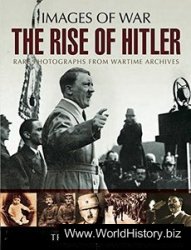Laurel hatcher Ulrich is the 300th Anniversary University Professor at Harvard. She is best known for A Midwife’s Tale: he Life of Martha Ballard Based on Her Diary, 1785—1812, which won the Pulitzer Prize for History in 1991. Working on a PBS documentary based on the book reinforced Ulrich’s longstanding interest in material culture. In he Age of Homespun (2001), she experimented with object-centered history by focusing each chapter on a different object, including Indian baskets and a painted cupboard, as well as a variety of homespun textiles. She is also known for coining a slogan that ended up on T-shirts, bumper stickers, and coffee mugs, and that became the title of her 2007 book, Well-behaved Women Seldom Make History.
Ivan Gaskell is Professor of Cultural History and Museum Studies, and head of the Focus Gallery Project at the Bard Graduate Center, New York City. Gaskell taught history and curated collections at Harvard for twenty years before assuming his current position. His work addresses intersections among history, art history, anthropology, museology, and philosophy. His many publications include Vermeer’s Wager: Speculations on Art History, heory, and Art Museums (2000) and six co-edited books in the series Cambridge Studies in Philosophy and the Arts. He has made numerous contributions to journals and edited volumes and has curated many experimental exhibitions at Harvard and, of late, in New York.
Sara J. Schechner is the David P. Wheatland Curator of the Collection of Historical Scientific Instruments at Harvard University, where is she is a member of the History of Science Department and has taught museum studies. Recent honors include the Joseph H. Hazen Education Prize of the History of Science Society for a career of innovative and diverse object-based teaching. Schechner has curated nearly thirty exhibitions and is the author of numerous articles on material culture, early modern astronomy, and colonial American science. Her books include Comets, Popular Culture, and the Birth of Modern Cosmology (1997), Western Astrolabes (1998), and the forthcoming Time and Time Again, which explores through objects how science and culture have shaped our sense of past, present, and future. Her current research focuses on sundials, science, and social change.
Sarah Anne Carter is the Curator and Director of Research of the Chipstone Foundation and the Chipstone Fellow in Material Culture at the University of Wisconsin-Madison. She was previously a lecturer on History and Literature at Harvard University. She earned a Ph. D. at Harvard in the History of American Civilization and an M. A. from the Winterthur Program in American Material Culture at the University of Delaware. She is the author of the forthcoming book Object Lessons, a nineteenth-century practice that shaped the ways Americans understood their material worlds and learned to talk about race and citizenship. Her research has been supported by several grants, and she has published essays in he History of Photography, he History of Childhood and Youth, and he Museum History Journal.
Samantha S. B. van Gerbig is Exhibition Designer and Photographer at the Collection of Historical Scientific Instruments at Harvard University. Deeply interested in the intersection between art and science, she earned a B. A. from Harvard University in Visual and Environmental Studies and an M. Sc. in the History of Science from Oxford University. Her recently designed exhibits include Body of Knowledge: A History of Anatomy (in hree Parts), Tangible hings, Paper Worlds: Printing Knowledge in Early Modern Europe, Wireless World: Marconi & the Making of Radio, and he Astrolabe: East and West. A skilled museum photographer, she has shot thousands of objects for documentation, research, and publication over the last decade.




 World History
World History![Black Thursday [Illustrated Edition]](/uploads/posts/2015-05/1432470149_1431513568_003514b1_medium.jpeg)









